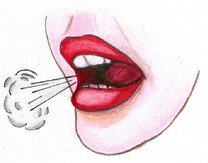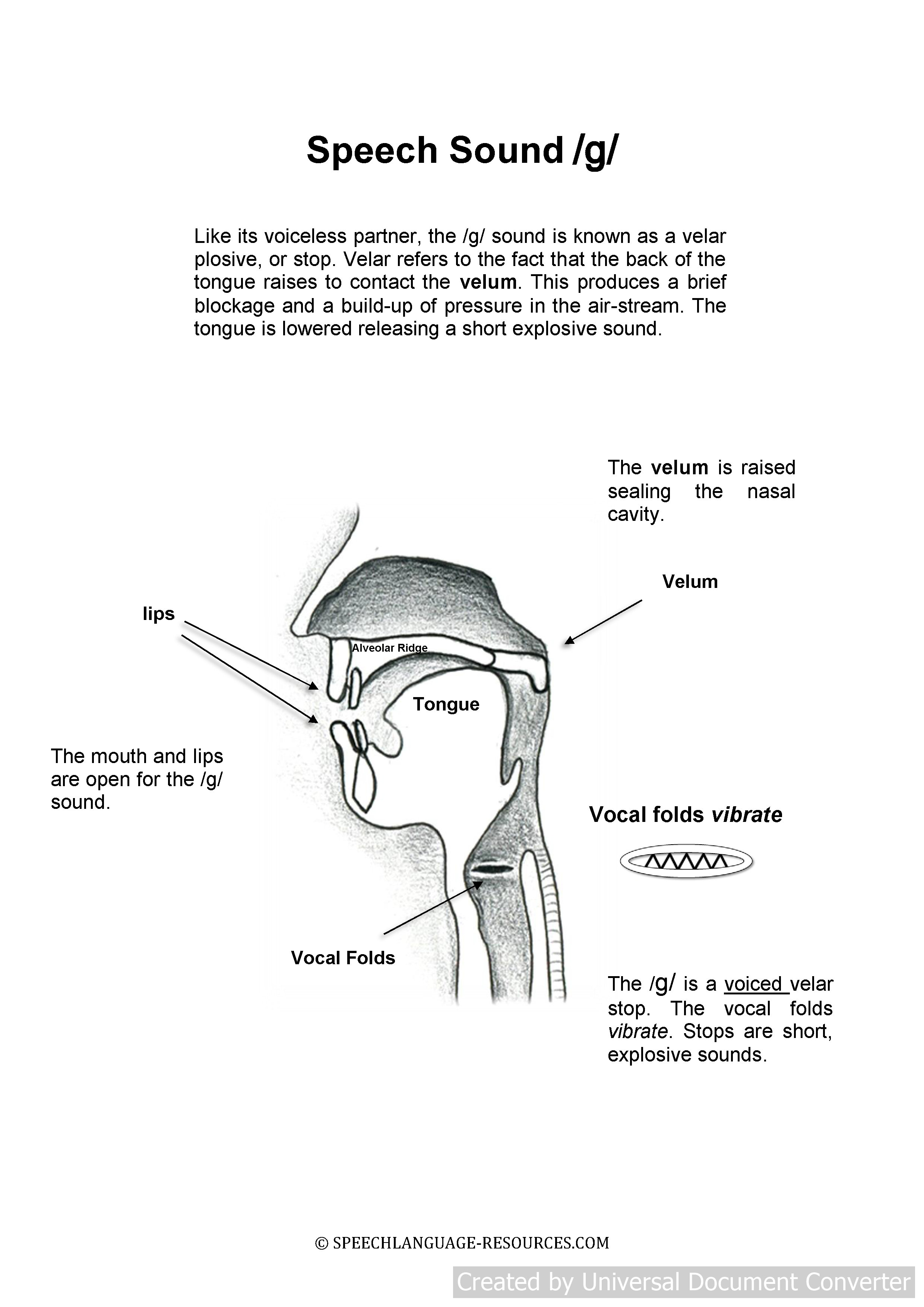Speech Therapy g Sound

Speech Therapy g Sound: The /g/ sound is a voiced velar plosive. Velar refers to the fact that the back of the tongue raises to contact the velum. This produces a brief blockage and a build-up of pressure in air-stream.
When the back of the tongue is lowered, there is a rapid, instantaneous burst of energy as the air pressure is released; hence the reference to plosive. The intra-oral pressure build-up and release of the /g/ sound is explosive.
Speech Therapy g Sound - Sound Errors
The most common /g/ sound error is the /g/ mis-articulated as /d/. This sound pattern is known as fronting. For instance, My game, becomes My dame.
Click on Image to Download Speech Sound /g/
Speech Therapy g Sound- Sound Stimulation
Demonstrate the characteristics of correct /g/ production to your child.
- Open your mouth wide and lift the tongue till it touches the velum at the back of the mouth. Mention that the tongue is pushed forward and down by the force of the air-stream. Demonstrate this several times. Exaggerate the sound and repeat it in a sequence, such as /g /g//g/. You may choose to say, The /g/ sounds like a tap dripping. The /g/ is the voiced partner of /k/.
- An important part of producing the /g/ sound is to enable the child to experience how different the /g/ sound is compared to the /d/ sound. The tongue position for the two sounds is quite different. The /d/ sound is made by the tongue thrusting forward with the tongue tip touching the alveolar ridge. In contrast, the /g/ sound is made by the tongue pushing firmly to the back of the oral cavity, which blocks the pharynx (throat). The tongue is lowered and the air-stream released with a short explosive puff of air.
/g/ Sound stimulation - Speech Therapy g Sound
Work through the following procedures with your child.
- Open your mouth and raise your tongue so that if fills the back of the mouth.
- Be conscious that while the tongue is in this position that the air-stream cannot escape into the mouth (oral cavity). There is also a build-up of pressure while the tongue is in this position.
- Release the tongue with the mouth in an open position. There should be a short explosive release of air and the distinct /g/ sound.
- Demonstrate the /g/ sound to your child and reinforce that the tongue must be all the way at the back of the mouth.
- Instruct the child to not allow the tongue to push forward. Your child will likely try to automatically produce the /d/ sound where the tongue thrusts forward and up.
- The /g/ sound is voiced. The vocal folds vibrate.
Speech Therapy g Sound - Sculpting from other Speech Sounds
Many speech sounds can be sculpted using other speech sounds as a starting point. This involves altering or adjusting speech sounds so that they approach the target sound in nature. This works by the clinician modeling a sound that the child is able to produce. The clinician then makes slight, progressive adjustments to the sound until the target sound is generated.
Sound sculpting from the /ŋ/ sound
- The /k/ sound can be shaped from the /ŋ/ sound. This is because the tongue position for both /g/ and /ŋ/ is very similar.
- The /ŋ/ is a continuous nasal sound and is relatively easy for a child to produce. Instruct your child to first produce a sustained /ŋ/ sound.
- The child is then to release the tongue position to produce the /g/ sound. The velum will automatically close once the /g/ is produced.
Sound sculpting from the /d/ sound
- The /g/ sound can be sculpted from the /d/ sound. Demonstrate to your child that the /d/ sound is short and explosive in nature and that there is a build-up of a pressure. Model the /g/ sound and explain that the /g/ sound is similar in nature to the /d/ sound.
- Instruct your child to produce a /d/ sound and note where the tongue touches (on the alveolar ridge near the front of the mouth).
- After completion of the /d/ instruct your child to consciously lower and retract the tongue until it is at the back of the mouth and then try to produce a /g/ sound. This may take some practice.
Updated 17/08/2020

